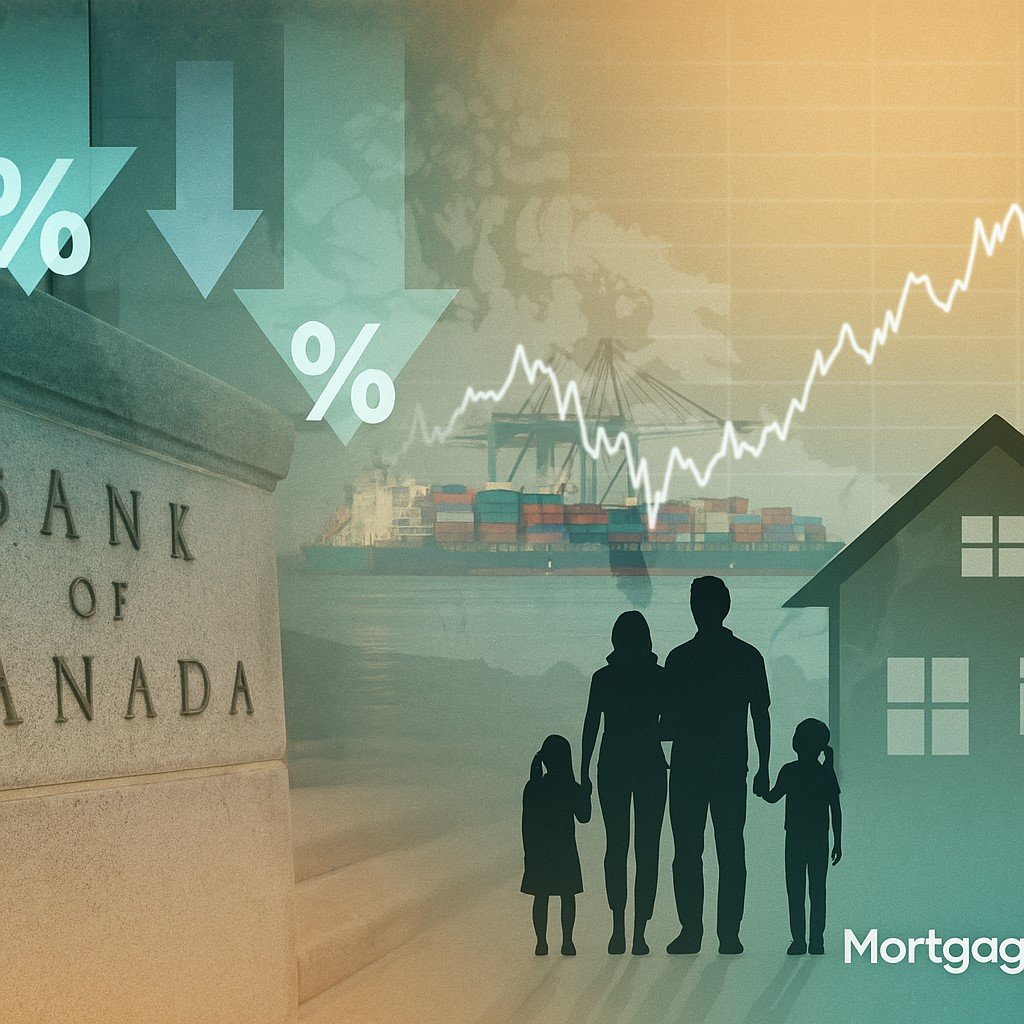
Rate Cuts, Trade Risks and Buyer Shifts: What’s Driving Canada’s Mortgage Market
From Bank of Canada rate cuts to U.S. trade tensions, multiple forces are shaping Canada’s mortgage market. Bond yields, buyer mix, and lender underwriting all add layers of uncertainty.
Toronto | Oct 8, 2025, 14:00 IST — As Canadians wait for signs of relief on housing affordability, attention is turning to what forces will shape mortgage markets in the months ahead. Analysts and lenders point to a complex mix of domestic and global drivers — from expected interest rate cuts by the Bank of Canada to international trade tensions and shifting buyer demographics.
Bank of Canada: Rate Cuts on the Horizon
The most immediate factor is monetary policy. With inflation cooling from the highs of 2023–24, economists now expect the Bank of Canada to deliver two quarter-point cuts before year-end 2025. That would bring its policy rate closer to 4.25 %, down from 4.75 %.
For borrowers, the effect is tangible. On a C$600,000 mortgage amortized over 25 years, each 25-basis-point cut translates to roughly C$80–C$100 lower monthly payments. Variable-rate borrowers would feel the impact almost immediately, while those renewing or shopping for fixed rates may benefit from falling government bond yields.
Mortgage brokers say this is the single biggest expectation shaping client conversations today. “Buyers are trying to time the rate cycle,” said a Toronto broker. “Even a small reduction could tip affordability for households that have been sitting on the sidelines.”
Trade Policy and Global Pressures
Domestic policy isn’t the only influence. Mortgage pricing in Canada is closely tied to global bond markets, particularly U.S. Treasury yields. Ongoing trade tensions between Canada and the United States — over energy policy and agricultural imports — have injected volatility into yield curves.
Higher global yields translate into costlier funding for Canadian banks, which can offset the benefit of central bank cuts. If trade disputes escalate, Canadian mortgage rates may not fall as quickly as buyers hope.
This dynamic creates uncertainty for both lenders and households, making risk management a central concern.
Bond Yields and Mortgage Pricing
Bond yields serve as the backbone for fixed-rate mortgages. In the past quarter, yields eased modestly, paving the way for discounted five-year fixed mortgage offers below 4.7 %. However, economists warn that yield movements are sensitive not only to Bank of Canada decisions but also to global investor sentiment.
For lenders, this means staying nimble. “Funding costs can change overnight,” noted one industry executive. “We’re seeing some lenders price aggressively to gain market share, while others are cautious.”
Who’s Buying Now?
Another important driver is buyer composition. Mortgage Professional Canada reports that:
- First-time buyers remain cautious, often relying on family support or smaller units in suburban markets.
- Condo buyers are emerging as a key group, especially as detached homes remain out of reach in major cities. Larger or family-sized condos are seeing more interest compared to tiny “micro-units” that were overbuilt during the last cycle.
- Move-up buyers are holding back, unwilling to trade their existing lower-rate mortgages for higher ones in the current market.
This changing buyer mix affects not only transaction volumes but also the types of mortgages lenders are underwriting.
Underwriting Shifts and Lender Appetite
Lenders are adjusting their strategies to these conditions. Some are loosening slightly around income verification for strong borrowers, while others are tightening, particularly around investment properties and high-loan-to-value ratios.
Non-bank lenders and credit unions are also gaining traction by offering flexible terms to buyers who don’t qualify under traditional guidelines. This reflects a competitive mortgage landscape, where underwriting standards are a key tool to attract or screen borrowers.
Affordability Pressure Remains
Even with anticipated rate cuts, affordability remains stretched in major hubs. A buyer in Vancouver still needs an income well above C$150,000 to comfortably purchase an average-priced home.
This reality has created a two-speed housing market:
- In cities like Edmonton and Winnipeg, affordability is within reach, and lower rates could accelerate buying.
- In Toronto, Vancouver, and Halifax, structural supply shortages and high prices mean affordability relief will be slow.
What to Watch
Looking ahead, Canadians should keep an eye on:
- BoC announcements: Next two meetings are critical to set rate expectations.
- Bond market trends: Yields will dictate how far fixed mortgage rates can fall.
- Trade developments: Canada–U.S. negotiations could alter economic forecasts and funding costs.
- Buyer activity: Will lower rates bring first-time buyers back in force, or will affordability barriers keep them sidelined?
Outlook
The Canadian mortgage market is entering a phase where multiple forces converge. Monetary policy will likely deliver some relief, but external shocks — from trade policy to bond yields — could blunt the effect.
For households, the message is clear: timing matters, but so does location. Rate cuts may open doors for buyers in balanced markets, while those in Toronto or Vancouver may still face tough choices.
Is Now the Right Time to Act?
With rate cuts expected and markets shifting, personalized advice matters more than ever. Let us guide you through the options for your home purchase or refinance.
Get Personalized Help NowStuck with a Mortgage Decision?
Don’t stress — our team is here to help. Reach out for free, no-obligation guidance.
Contact the Experts



